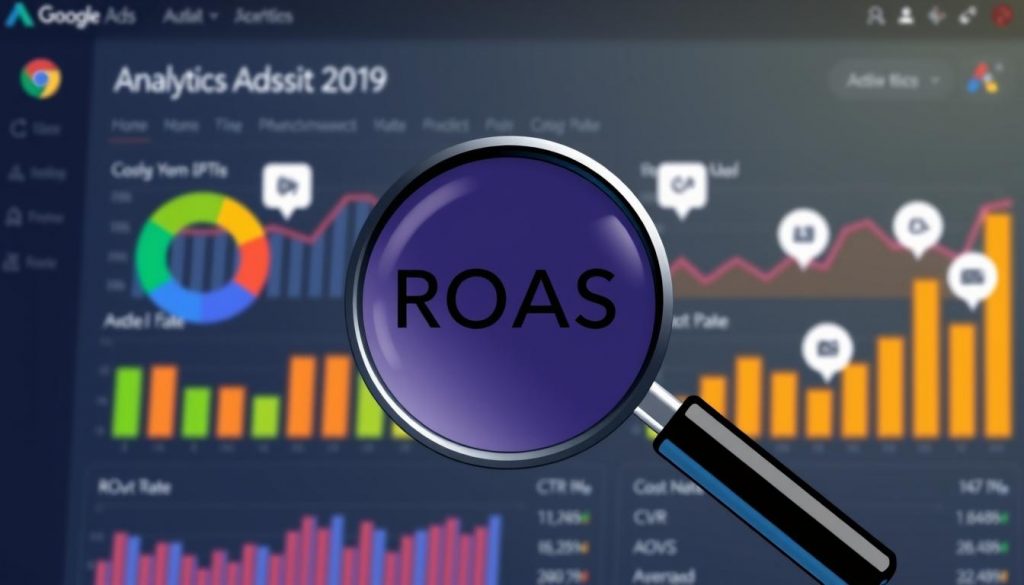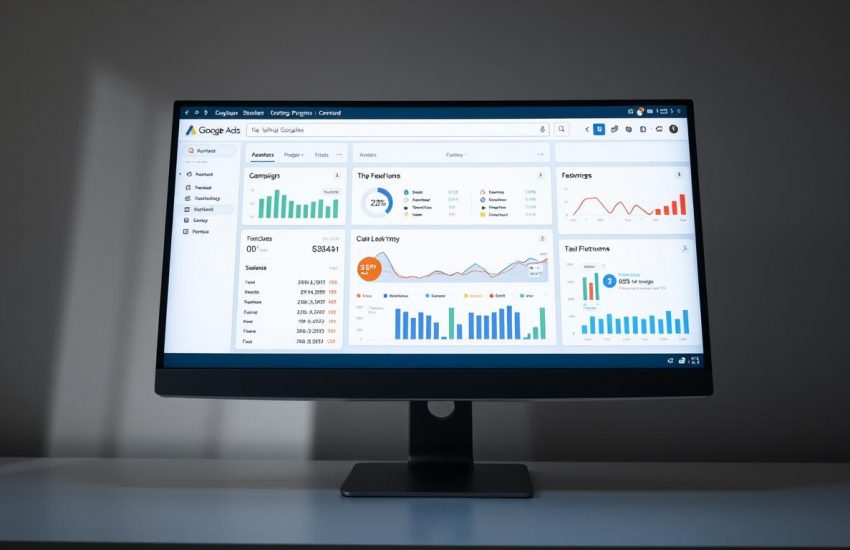We’ve all felt the sting of a campaign that looked promising but fell short. As marketers and business owners, we care about results. We also know that hidden setup issues and rushed choices can quietly erode performance and profit.
In this short guide, we help you spot the highest-impact ads problems and fix them with clear steps. You’ll learn to read ROAS as an outcome, not a strategy, and to link search metrics to real business value. We focus on the parts that actually drive outcomes: CTR, CPC, CVR, and AOV.
We’ll show how incorrect conversion tracking and underfunded, fragmented budgets stall learning. We also cover when broad match and auto-recommendations waste spend, and why tested, emotional creative beats generic copy.
By the end you’ll have a short checklist to protect budget, sharpen keywords, and align advertising with your marketing goals. Let’s fix what’s quietly holding your campaigns back.
Key Takeaways
- ROAS is an outcome—diagnose CTR, CPC, CVR, and AOV first.
- Use correct conversion actions and enough data before changing bids.
- Prevent wasted spend with focused budgets and thoughtful match types.
- Blend emotional, tested creative with brand checks and A/B tests.
- Align tracking, search experience, and team workflows for scalable growth.
Why your Google Ads performance dips: intent, timing, and the “present” data context
Performance dips often hide a mismatch between user intent and the experience your campaigns serve. We help you read the signals before making costly edits.

Search intent in the United States has shifted: people expect fast answers, clear offers, social proof, and frictionless paths. Your ads and landing pages must match that intent. If they don’t, CTR and conversions drop fast.
Allowing enough data to learn before changing campaigns
Optimization needs stable samples. Let new campaigns run 2–4 weeks before major changes. Low-volume efforts may need more time.
- Use thresholds: 100 clicks and 1,000 impressions for directional reads.
- Wait for 15–20 conversions before making conversion-driven decisions.
- Change one variable at a time to avoid misattribution.
Also analyze geo performance by state, DMA, or ZIP to find pockets to scale or exclude. Tighten queries: align keywords and match, and add negative keywords early to cut irrelevant search terms.
Finally, plan for the present data landscape: implement Consent Mode v2, deploy server-side tagging like Google Tag Gateway, and monitor iOS on-device conversion measurement. These factors lengthen feedback loops—so budget and patience matter.
ROAS isn’t a strategy: use CTR, CPC, CVR, and AOV to diagnose results
When ROAS swings, the real clues live in clicks, costs, conversion rates, and order value.
We treat ROAS as an output. Trace changes to the four components so you apply precise fixes instead of broad changes.

Linking metric shifts to ROAS changes for targeted fixes
Check CTR first. A drop in clicks usually means ad copy or targeting no longer matches queries.
Watch CPC next. Rising cost per click often signals competitors or auction shifts.
Inspect CVR and landing pages. Conversion slides point to friction or unclear value propositions. Pair CRO moves with A/B tests.
Boosting AOV to lift ROAS without raising bids
- Bundle products, add cross-sells, and offer volume discounts to increase order value.
- Set free-shipping thresholds and personalize recommendations to nudge higher baskets.
- Align these moves with tracking so revenue values are accurate in your analytics data.
| Metric | Symptom | Likely Cause | Action |
|---|---|---|---|
| CTR | Fewer clicks | Ad message mismatch | Refresh copy, refine targeting |
| CPC | Costs rising | Competitors increasing bids | Adjust match types, restructure bids |
| CVR | Lower conversions | Landing friction | Improve clarity, speed, trust signals |
| AOV | Lower order value | No upsell logic | Use bundles, thresholds, cross-sell |
Prioritize the limiting factor first. Fix the weakest link to lift overall performance and make better business decisions.
Google Ads mistakes that start with conversion tracking
Wrong conversion events hide true performance and guide bidding to low-value traffic. Treat conversions as purchase or qualified lead actions, not pageviews. Counting pageviews trains Smart Bidding to seek cheap visits, not customers.
Set meaningful conversion actions and values, not pageviews
We define conversions as clear business outcomes: purchases, booked demos, or qualified leads. Assign real revenue or lead quality value so the account optimizes toward profit.
Avoid vanity metrics. Pageviews and arbitrary events dilute learning and inflate spend.
Consent Mode v2, server-side tagging, and data quality signals
Upgrade tracking with Consent Mode v2 and server-side tagging via Google Tag Gateway. These keep conversion data flowing while respecting privacy limits.
Monitor on-device iOS signals and attribution changes. Poor data signals force conservative or misleading bid decisions.
Feeding qualified lead data back into Google Ads
Close the loop by uploading qualified leads and offline outcomes. This teaches the algorithm which clicks predict revenue, not just form fills.
We audit the account for duplicate or obsolete conversions. Cleaning up conversion sets restores bidding quality and budget focus.
| Problem | Symptom | Cause | Fix |
|---|---|---|---|
| Pageviews counted | High conversions, low sales | Misdefined conversion | Switch to purchase/lead events |
| Inflated values | Poor ROAS | Wrong revenue mapping | Assign accurate value per event |
| Missing server-side tags | Lost signals, gaps | Client-only tracking limits | Deploy Tag Gateway + Consent Mode v2 |
| No offline upload | Smart Bids optimize wrong | Missing lead quality feedback | Upload CRM outcomes regularly |
Proof in practice: A Prometheus audit found inflated conversion values. After fixing values and tracking, ROAS rose from under 2.0 to above 6.0 and eliminated $40,000/month in wasted spend within three months.
Misaligned Smart Bidding goals that train the algorithm on the wrong outcomes
Smart bidding learns from what you count — so the wrong goal trains the system to chase low-value actions.
We choose a bidding approach based on conversion volume and business goals, not on preference. Stable data is the foundation of a strong strategy.
Choosing strategies by volume
If you average 7–10 conversions per week, use tCPA or tROAS to let auction-time bidding refine performance. These strategies require steady conversions to learn.
Below that threshold, start with Maximize Conversions, Maximize Clicks, or enhanced CPC. These options help build data while protecting short-term performance.
Practical rules when volume is low
- Verify conversions: Ensure you’re not optimizing to pageviews or weak signals.
- Minimize changes: Let the campaign learn; frequent edits reset the algorithm.
- Run experiments: Test strategies side-by-side with the same audience and seasonality.
- Set guardrails: Use sensible budgets and bid caps to avoid runaway CPCs.
“We phase adoption: start broad to gather data, then shift to target bids as conversions stabilize.”
| Volume | Recommended approach | Key action |
|---|---|---|
| 7–10+ conversions/week | tCPA or tROAS | Use target bids; monitor ROAS and conversion quality |
| 3–7 conversions/week | Maximize Conversions / eCPC | Build volume with offers, creative, and funnel fixes |
| <3 conversions/week | Maximize Clicks / manual bids | Focus on traffic quality and better conversion tagging |
Letting auto-applied recommendations steer your account
Auto-applied changes can quietly rewrite targeting and bids without the context your team needs.
We turn off auto-applied updates and keep control in our hands. Automated edits may alter match types, bids, keywords, and creative at scale. That can break tested strategies and harm long-term performance.
Instead, we review suggestions monthly. We apply only those aligned to goals. We dismiss noisy items that conflict with experiments.
Every suggestion gets evaluated against real data. We document decisions and track outcomes. This preserves structure and makes future decisions faster.
- Protect bidding, match types, and active creative tests from unplanned shifts.
- Run experiments to validate high-impact suggestions before full rollout.
- Keep a clear change log and naming scheme for the account.
| Action | Why it matters | Outcome |
|---|---|---|
| Disable auto-applied changes | Prevents unplanned edits | Stable account structure |
| Monthly review cadence | Select only goal-aligned suggestions | Improved decision quality |
| Experiment before rollout | Test impact safely | Protects performance and budget |
Overusing broad match without controls
Broad match can unlock new demand, but only with strict controls and clear signals. Left unchecked, it grabs irrelevant queries and wastes budget quickly. We treat it as a targeted experiment, not a default setting.
When broad match works: robust data, Smart Bidding, and audiences
Broad match shines in high-conversion accounts. With steady conversion volume, automated bidding can learn useful patterns.
Layering audiences—remarketing, in-market, or RLSA—helps direct that expansion toward likely buyers.
Keep tests in small, controlled budgets and measure incrementality versus exact and phrase campaigns.
Match types and search terms: balancing reach with relevance
Use broad for exploration, and exact or phrase to capture known demand. Inspect search terms weekly to prune bad traffic.
- Pair match types intentionally: broad to find, exact/phrase to convert.
- Feed negative keywords back quickly to protect budgets.
- Watch auction insights to shift bids and match as demand changes.
| Use case | Control | Action |
|---|---|---|
| High conversions | Medium | Enable broad with Smart Bidding + audiences |
| Exploration phase | High | Isolate test in small campaign |
| Low data | Very high | Prefer phrase/exact; avoid broad |
Pin guardrails. Use negatives, refine keyword match, and keep data density high. That way the match learns from meaningful signals — not scattered noise — and you protect the campaign while scaling reach.
Neglecting negative keywords and wasting budget on irrelevant queries
Unchecked search queries pull spend away from customers who actually convert. We treat negative keyword management as an ongoing system, not a one-off tidy up.
Systematic mining: filters, Sheets, n-grams, and automation
Start with the Search Terms Report and filter for high spend with no conversion. Export results to Sheets.
Use pivots and conditional formatting to spot patterns fast. Run n-gram analysis or tools like Optmyzr to scale discovery across campaigns.
Automate recurring audits with scripts or platform tools so discovery grows with account size. Group found negatives into themed shared lists for efficient blocking.
Precision over zeal: avoid blocking profitable variants
Be careful with blanket negatives. Removing a word like “cheap” can cut off valuable long-tail intent, such as “cheap designer shoes” that convert.
We always check conversion paths and tracking before adding negatives. That ensures you remove waste while preserving qualified reach and protecting budget.
- Move from reactive to proactive mining using filters for high-spend, zero-conversion queries.
- Export, pivot, and n-gram to find hard-to-see patterns.
- Automate audits and use shared lists to scale controls across campaigns.
No ad copy testing strategy and the AI creative trap
Without a steady ad testing plan, your account learns the wrong message and wastes time and spend. We set a clear cadence so creative improves predictably and your performance follows.
Ad testing cadence: 2–4 variants, data-driven winners
Keep 2–4 variants per ad group. Let them run about a month or until you hit enough impressions and conversions.
Pause losers and write new challengers. Repeat this cycle to raise quality over time.
Using AI assets with A/B tests and brand voice checks
AI can jumpstart ideas. But we treat generated assets as drafts, not final copy.
Test AI against human copy in A/B experiments. Check voice, tone, and factual claims before rollout. Tested AI assets showed 63% higher Ad Strength ratings, so validate gains with real data.
- Use emotional hooks plus concrete benefits to earn clicks and conversions.
- Map ad copy to landing so the promise on the ad matches the on-page experience.
- Test headlines and descriptions against priority keyword themes and search terms.
- Document each change and schedule recurring creative reviews so learning never stalls.
| Practice | Why it matters | Action |
|---|---|---|
| 2–4 variants | Stable comparisons | Run 3–4 weeks; pause losers |
| AI + human A/B | Combines speed with brand control | Always validate before scaling |
| Copy-to-landing match | Improves quality score and conversion | Align message, offer, and visual proof |
“Small, disciplined tests beat big, unmeasured bets.”
We make decisions only after sufficient data. That approach keeps your account focused on real results and prevents reactionary changes that harm long-term strategies.
Underfunded campaigns and fragmented budgets
Fragmented budgets hide clear winners by diluting traffic across too many campaign lanes. Small daily budgets—$5 a day split across many campaigns—rarely deliver the clicks needed when CPCs are $10 or more.
We identify fragmentation that prevents campaigns from reaching the minimum data for real optimization. Then we consolidate campaigns and ad groups to increase data density and speed learning.
We align daily budget levels with realistic CPCs so each campaign gets enough clicks to form statistically useful signals. Prioritize high-potential segments first to prove results before expanding.
- Consolidate to fewer, focused campaigns to boost learning and lower costs.
- Phase budget increases tied to milestone results to protect cash while scaling.
- Monitor pacing weekly and reallocate spend to the best opportunities.
“Consolidation turns scattered pennies into meaningful data that drives business results.”
We keep the account lean so quality signals strengthen over time. That approach delivers clearer performance and better business results from your ads investment.
Chasing short-term fluctuations and secondary metrics
Short-term swings in performance often look dramatic but usually hide random noise. Weekly changes rarely require immediate overhaul. We look for steady shifts over time before we act.
Normal variance vs meaningful change: acting on trends, not noise
Use longer lookbacks and trend analysis to separate signal from routine variation. A single bad week does not prove the account is broken.
We lengthen windows to 4–12 weeks when possible. That reveals seasonality, bidding shifts, and real search behavior.
Prioritizing profit and profitability over vanity wins
Focus reporting on business profit (revenue minus ad spend) and profitability (revenue divided by ad spend). CTR, CPC, and CPA are useful, but they can mislead when taken alone.
- Limit frequent edits; each change restarts learning and creates busywork.
- Run structured experiments so we can attribute which changes actually move conversions and profit.
- Keep tracking and data quality tight so our decisions rest on reliable signals.
“Patience and methodical testing beat reactive busywork every time.”
We align marketing goals with google ads metrics that matter for growth. Use search insights and keyword trends to explain short dips before making costly changes. Clear communication helps stakeholders accept thoughtful, data-driven decisions.
Ignoring YouTube, Gmail, and the shift to Demand Gen
YouTube and Gmail deliver low-cost reach; Demand Gen adds testing and feed integrations that boost conversions.
YouTube and Gmail advantages: targeting, CPMs, and formats
YouTube and Gmail offer efficient reach. CPMs often run $2–$5 and views cost about $0.10–$0.30.
That combination gives more impressions for the same budget and exposes new customers outside search. Vertical video, Shorts, and native Gmail formats drive engagement. These placements help lower funnel costs and lift overall account performance.
Migration playbook: replacing Video Action with Demand Gen
Demand Gen replaces Video Action by July 2025 and expands reach to Shorts, Discover, and the GDN. Early tests show ~16% more conversions when retail feeds and improved A/B tools are used.
- Start with ~20% of your video budget to test Demand Gen.
- Use vertical creative and retail feed integrations where relevant.
- Leverage built-in A/B testing and measure incremental conversions.
We balance reach and quality by aligning bidding and delivery to goals. We monitor competitors and seasonality, then feed cross-channel learnings back into search, keywords, and creative strategies.
Tip: Treat Demand Gen as a staged migration — test, learn, scale — while protecting core search campaigns.
Conclusion
A disciplined, data-first approach makes small changes compound into durable growth.
We close with a clear checklist: verify conversion tracking and values, wait for at least 100 clicks (or 1,000 impressions) and 15–20 conversions before major edits, and deploy Consent Mode v2 plus server-side tagging so optimization runs on truth.
Protect budget with precise negative keywords, controlled broad match tests, and consolidated campaigns. Keep 2–4 ad variants and test AI copy against human drafts. Link message to landing pages so clicks turn into value.
Audit your google ads account now: fix tracking, tighten keywords and match, set budgets that let learning finish, and measure profit over noise. We’ll help you get steady, predictable performance.


